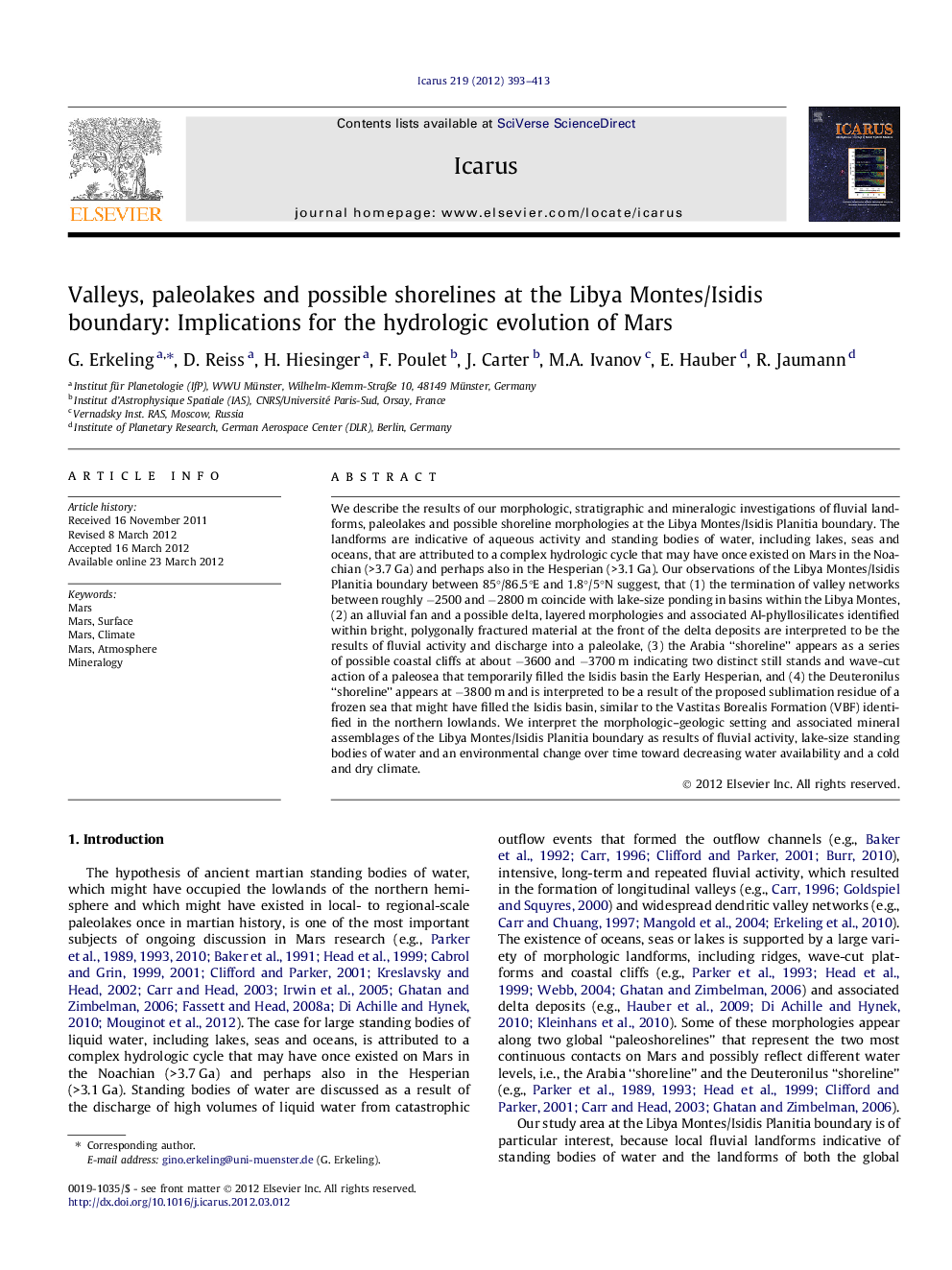| کد مقاله | کد نشریه | سال انتشار | مقاله انگلیسی | نسخه تمام متن |
|---|---|---|---|---|
| 1773505 | 1021134 | 2012 | 21 صفحه PDF | دانلود رایگان |

We describe the results of our morphologic, stratigraphic and mineralogic investigations of fluvial landforms, paleolakes and possible shoreline morphologies at the Libya Montes/Isidis Planitia boundary. The landforms are indicative of aqueous activity and standing bodies of water, including lakes, seas and oceans, that are attributed to a complex hydrologic cycle that may have once existed on Mars in the Noachian (>3.7 Ga) and perhaps also in the Hesperian (>3.1 Ga). Our observations of the Libya Montes/Isidis Planitia boundary between 85°/86.5°E and 1.8°/5°N suggest, that (1) the termination of valley networks between roughly −2500 and −2800 m coincide with lake-size ponding in basins within the Libya Montes, (2) an alluvial fan and a possible delta, layered morphologies and associated Al-phyllosilicates identified within bright, polygonally fractured material at the front of the delta deposits are interpreted to be the results of fluvial activity and discharge into a paleolake, (3) the Arabia “shoreline” appears as a series of possible coastal cliffs at about −3600 and −3700 m indicating two distinct still stands and wave-cut action of a paleosea that temporarily filled the Isidis basin the Early Hesperian, and (4) the Deuteronilus “shoreline” appears at −3800 m and is interpreted to be a result of the proposed sublimation residue of a frozen sea that might have filled the Isidis basin, similar to the Vastitas Borealis Formation (VBF) identified in the northern lowlands. We interpret the morphologic–geologic setting and associated mineral assemblages of the Libya Montes/Isidis Planitia boundary as results of fluvial activity, lake-size standing bodies of water and an environmental change over time toward decreasing water availability and a cold and dry climate.
► Geologic setting is indicative of aqueous activity and standing bodies of water.
► Cliffs of Arabia contact are reasonable candidates for coastal erosional landforms.
► Deuteronilus contact possibly explained by residue of putative Isidis sea.
► Libya Montes valleys were not the source of the water in the putative Isidis sea.
► We propose this site as a new candidate landing site.
Journal: Icarus - Volume 219, Issue 1, May 2012, Pages 393–413